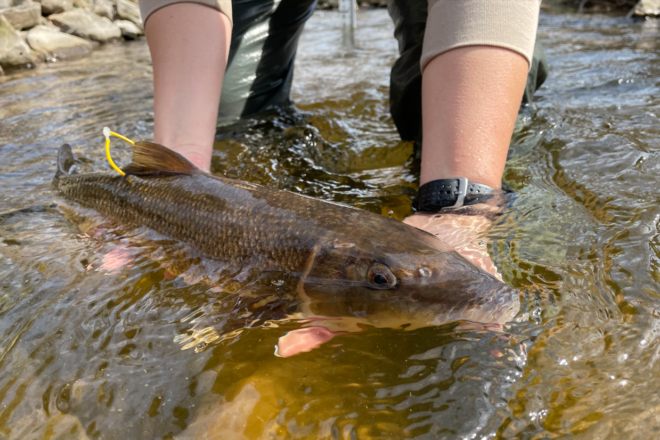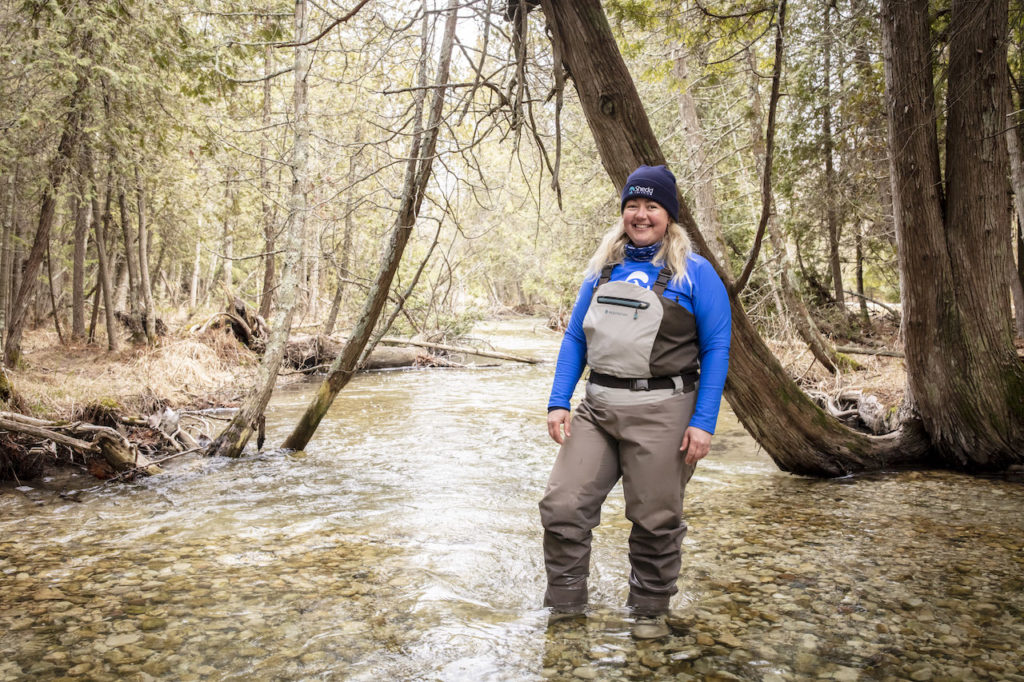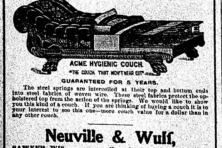Shedd Aquarium Scientist Researches Suckers in Door County
- Share
- Tweet
- Pin
- Share

Anglers and commercial fisheries don’t seek out suckers. More often, the omnivorous freshwater fish are considered “trash fish” to be thrown back into the water.
But, although they may not be valuable to anglers, they certainly have value for researchers, according to Karen Murchie, the Shedd Aquarium’s director of freshwater research.
“Collecting data on when suckers are showing up to spawn is contributing to really important ecological knowledge for the Great Lakes,” she said.
That’s because suckers contribute substantially to food webs across the Great Lakes. When these fish spawn, they fill tributaries with eggs and waste, which nourish animals and aquatic plants, respectively.
Despite their ecological impact – and the fact that they’re some of the most abundant fish in the Great Lakes – suckers are understudied, Murchie said. That’s partly because anglers and commercial fisheries don’t seek them out, so state agencies usually have little incentive to study them.
Murchie is trying to fill in this research gap. Since 2017, she has been conducting fieldwork on suckers in the Great Lakes across three state borders: Illinois, Michigan and Wisconsin. Her research focus is on migration phenology, or the timing of when the fish return to tributaries to spawn in the spring.

Some of Murchie’s work in Wisconsin brings her up to Door County, which is an ideal place for research “because you don’t have to go far to hit so many small creeks that get these amazing sucker runs,” she said.
Many of those sucker runs – groups of fish traveling to a spawning location – up and down the peninsula are on slightly different spawning schedules.
“The tributaries in Sturgeon Bay tend to kick off a little bit sooner than the ones in Baileys Harbor,” Murchie said. “From a timing perspective, there’s almost always some kind of activity, so I can bounce back and forth from one tributary to the next and capture lots of data.”
To track sucker migration, Murchie – sometimes with the assistance of U.S. Fish and Wildlife Service biologists – inserts acoustic transmitters in the fish. These transmitters are similar to the microchips placed in pets, with each transmitter unique to one fish.
When a tagged sucker swims near one of the acoustic receivers scattered throughout the Great Lakes, the receiver logs its information. And the acoustic receivers don’t discriminate, logging Murchie’s tagged suckers along with fish that have been tagged in research projects by other institutions. UW-Stevens Point, for example, has tagged walleye, whitefish and lake sturgeon, she said.
“It’s a really cool opportunity to share scientific infrastructure,” she said.
Murchie’s research efforts are backed by volunteer “citizen scientists” who use data sheets to document when suckers start showing up in certain areas.
“The use of volunteers in documenting things like fish migration is really nonexistent anywhere else other than this program,” Murchie said. “It’s very common in the birding community [with bird counts], but it’s a pretty new one for fish.”
In Door County, the pool of volunteers and interested community members is especially large, and organizations such as The Ridges Sanctuary in Baileys Harbor and Crossroads at Big Creek in Sturgeon Bay often help coordinate volunteer efforts, she said.

Murchie’s research aims to discover whether suckers come back to the same location year after year to spawn; which environmental cues, such as water temperature and flow rates, spark migration; and the impact of physiological stress on fish that must work around migratory roadblocks such as dams.
This kind of research can help to ensure that all habitats suckers need throughout their life cycle are protected, Murchie said. It can also illuminate how climate change is affecting the Great Lakes as researchers compare current-day migratory patterns with historical records.
Murchie’s research has already revealed that white suckers spawn in the same tributaries year after year – and this summer, she’ll be able to examine data about how far each individual fish travels.
“We did already see one of the tagged suckers move from Sturgeon Bay and get picked up at Chambers Island,” she said. “That was within a few months of being tagged and released.”



